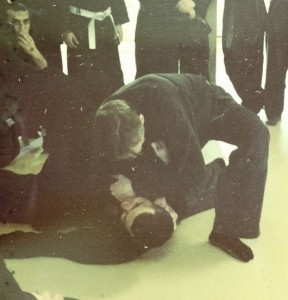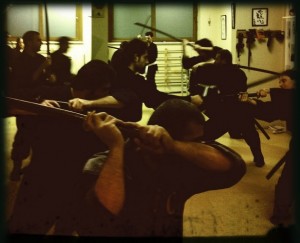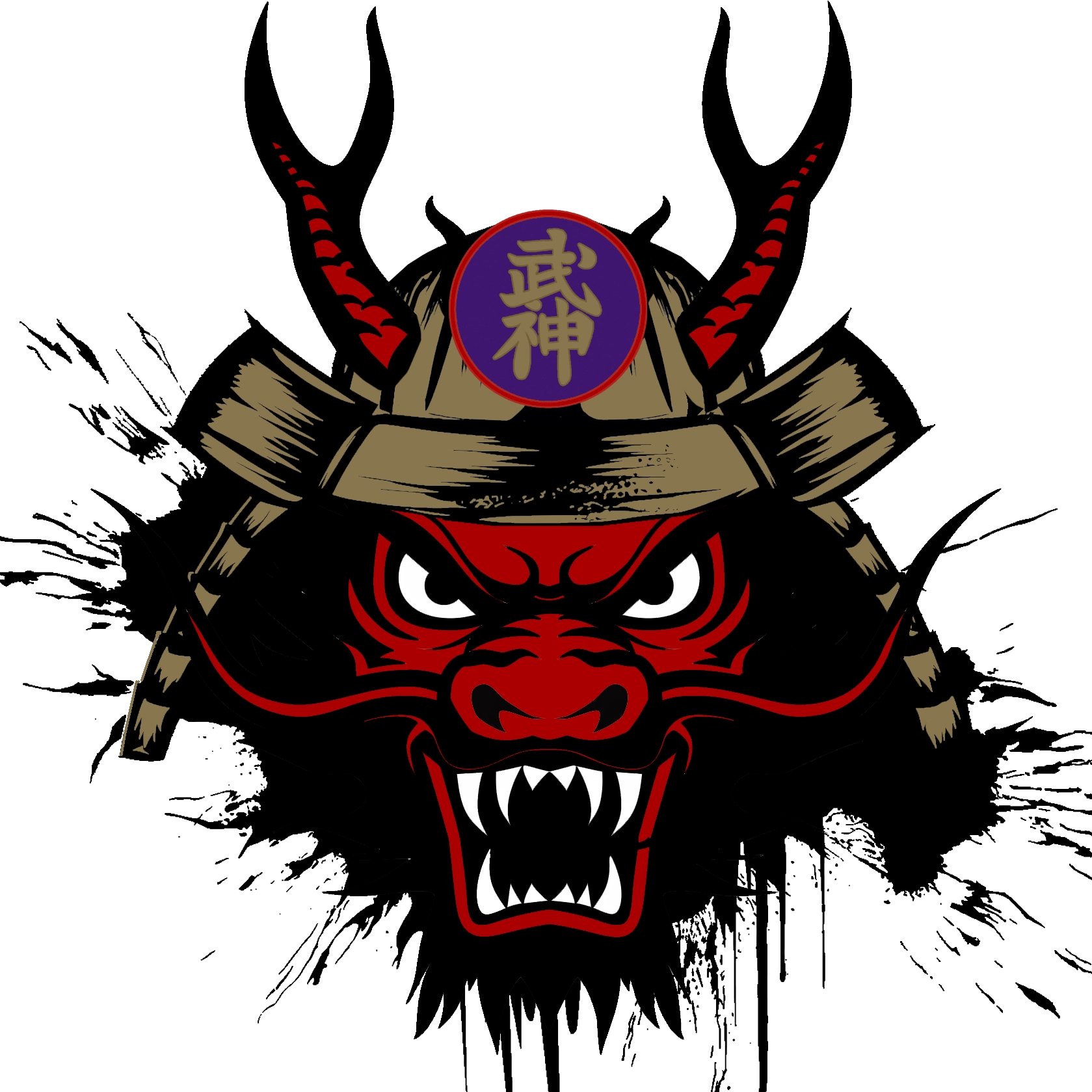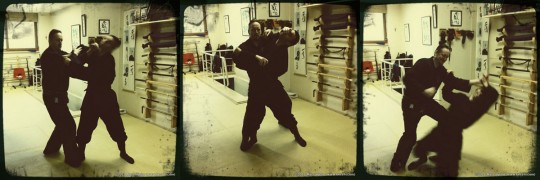
I think this was my 7’th or 8’th time I’ve been invited by Ercan and the Bujinkan Haburamu Dojo in Istanbul. I feel honored to be invited back so many times, I must be doing something right. The organizer hadn’t asked for any special theme so I joked and asked if they wanted chaotic training. And they said yes. Well if you know me I like to have a special theme to go by so I thought I would do the Gyaku-gi from Chi-ryaku no maki, but I would do them all both omote and ura.

逆技 GYAKU GI
- 竹折 Take-ori
- 表逆 Omote-gyaku
- 裏逆 Ura-gyaku
- 本逆 Hon-gyaku
- 表鬼砕 Omote oni-kudaki
- 裏鬼砕 Ura oni-kudaki
- 武者捕 Musha-dori
- 武双捕 Musō-dori
- 大逆 Ō-gyaku
It is said that when you take the opponent on his back you will let him live, you give him the gift of life. And if you take him down on his face you will take his life. When a samurai died on the battle field and was found dead lying with his face down they would say that he died with honor. If they found him dead on his back they would say he died without honor. So if you take the opponent on his back you should let him live and not die in shame.
At the seminar I showed all the above techniques as they should be done (my way!). I did henka, I did them omote and also ura. For example, most of you know that with omote-gyaku and musha-dori you take him backwards. But I also showed how to take him forwards with these techniques. This was the theme I had in mind when starting the seminar, doing an ura technique but taking him omote and the other way.
I started with the take-ori technique and did many variations, I got lost in time and when it was lunch I realized I had spent half the day on one technique and there was eight more techniques. After lunch I asked what they wanted to do, and someone had asked about musha-dori. So we spent most of the afternoon doing musha-dori, and ended with a simple sword technique.
 Next day I kept doing the other seven techniques, and later finished with some more simple sword techniques and also hanbo-jutsu. I always enjoyed going to Istanbul for seminars because the students at the Haburamu dojo are so eager and willing to train.
Next day I kept doing the other seven techniques, and later finished with some more simple sword techniques and also hanbo-jutsu. I always enjoyed going to Istanbul for seminars because the students at the Haburamu dojo are so eager and willing to train.
Oh I got a new nick name, “the Bujinkan engineer” from Ercan and his students :-D. Because they said I show so many details in each movement. Well, that is how I look at my own training. I believe this is very important, to look at everything and study it in detail. I’m not satisfied looking at something from only the outside, I want o see how it looks from the inside, under, above, I want to feel the weight, texture, smell, taste, how it sounds and everything else I can think of. Just doing a technique without thinking about it and hope that I someday will understand is just not me.
Of course I can just show 1000 henka on a seminar and let people have fun and maybe not learning anything except moving around, I can do this to, but not too much. Trying to teach like Soke is impossible for me, I’m not technically ready yet. And I’m not doing anyone favors by trying to teach like Soke. But I’m geting there, I like to believe and hope that. I constantly jump between the shu-ha-ri levels; to keep moving, polishing my basics, and also moving freely and let the techniques come naturally. The last part is good for beginners to know about, but they must understand that this can not come easy until the basics have been perfected.
Besides from the training I had a good time. On Friday Ercan took me to the Basilica Cistern, this is the largest of several hundred ancient cisterns that lie beneath the city of Istanbul (formerly Constantinople). After this we went to the Topkapı Palace which was the official and primary residence in the city of the Ottoman Sultans for approximately 400 years (1465-1856) of their 624-year reign. We also passed the Sultan Ahmed Mosque. Ercan told me this story; when the Sultan ordered the Mosque to be built he asked for gold minarets, in Turkish language gold is altın. But the architect heard altı which means six. Hence the six minarets of the Blue Mosque. After the sightseeing we had dinner and then the boat back home to prepare for the extra training later this evening.
 The food in Turkey is excellent, I especially like Adana Kebab and Şalgam. I was a little disappointed about the pubs, the one that was supposed to be the best had recently closed, “The English Pub” did not even have English beer (not even Guine55 or Ki11kenny), the brewpub turned out to be a loud disco with only one bad pilsener on tap and one slightly better on bottle. But the company of old and new friends was very nice and that is much more important.
The food in Turkey is excellent, I especially like Adana Kebab and Şalgam. I was a little disappointed about the pubs, the one that was supposed to be the best had recently closed, “The English Pub” did not even have English beer (not even Guine55 or Ki11kenny), the brewpub turned out to be a loud disco with only one bad pilsener on tap and one slightly better on bottle. But the company of old and new friends was very nice and that is much more important.
After all I had a good time, and look forward coming back soon.
I’d like to say thank you to Ercan for organizing everything! And also to all the people attending the seminar which made all this possible.
See more pictures from this trip, click here.
Ercan filmed the seminar, and he also got film from my camera. Contact him if you are interested in a DVD of this seminar.
Sample video clip
Buy the full 75 minute video


